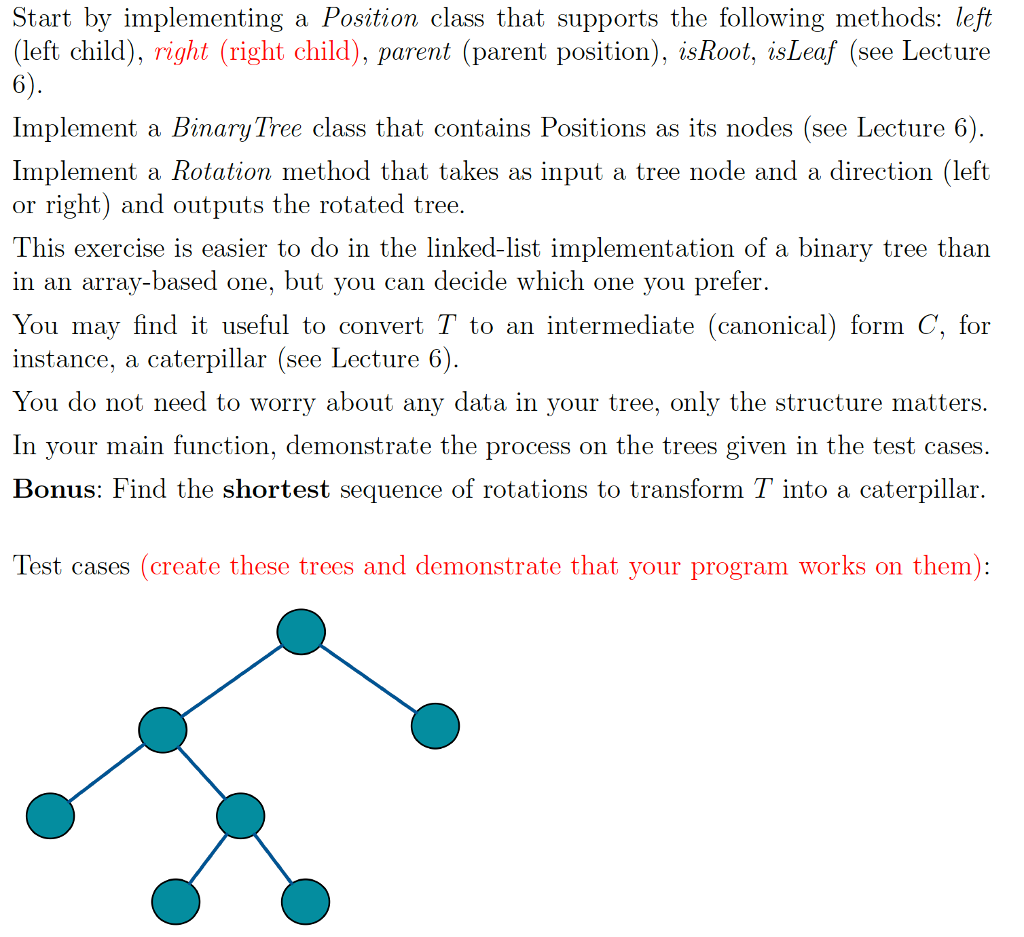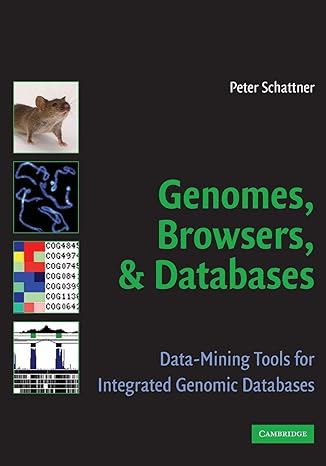Answered step by step
Verified Expert Solution
Question
1 Approved Answer
Implement a method that, given an input binary tree T with n nodes, performs a sequence of up to n rotations (which can be left
Implement a method that, given an input binary tree T with
n nodes, performs a sequence of up to n rotations (which can be left or right rota-
tions) to transform T into a caterpillar (a tree for which every left child is a leaf). in C++

Step by Step Solution
There are 3 Steps involved in it
Step: 1

Get Instant Access to Expert-Tailored Solutions
See step-by-step solutions with expert insights and AI powered tools for academic success
Step: 2

Step: 3

Ace Your Homework with AI
Get the answers you need in no time with our AI-driven, step-by-step assistance
Get Started


